Plenary Keynote Lectures will be delivered at the SEMC 2025 International Conference by distinguished speakers from across the world. Confirmed Keynote Speakers to date are as follows:
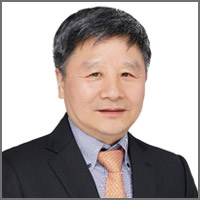
| Professor Guo-Qiang Li Guo-Qiang Li is Distinguished Professor of Structural Engineering in Tongji University, the Director of the Research Centre for Steel Construction of the Education Ministry of China and the Director of the National Research Centre for Pre-fabrication Construction of China. He is also a Vice-Chairman of the Chinese Society of Steel Construction, a Vice-Chairman of the Chinese Association of Construction Standardization, a Foreign Member of the Royal Flemish Academy for Science and the Arts of Belgium, a Fellow of the Institution of Structural Engineers in UK and a Fellow of the Council of Tall Buildings and Urban Habitat. Professor Li’s research has been mainly in the area of hazard mitigation for steel construction, including earthquake-resistance, fire-resistance and blast-resistance of steel structures. A recipient of many awards and honours, he has published 16 technical books and more than 800 journal papers in English and Chinese relevant to his research topics. |
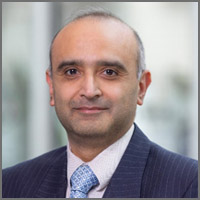
| Professor M Ahmer Wadee Ahmer Wadee is Professor of Nonlinear Mechanics within the Department of Civil and Environmental Engineering at Imperial College London. He leads research specialising in the field of nonlinear structural stability, where his primary research interests include analytical modelling of localised instabilities in structures, conventional materials and metamaterials, alongside modal interactions in globally and locally slender metallic and composite structures. In 2014, he was listed as one of the 100 Leading Practising Scientists in the UK by The Science Council. He is a Fellow of the Institute of Mathematics and its Applications, a Member of the American Society of Civil Engineers, a Chartered Scientist and a Chartered Mathematician. Since 2019, he has served as Editor of Thin-Walled Structures, and has also served on the Editorial Board of Structures, the research journal of the Institution of Structural Engineers, since 2015. He has published over 200 articles in the scientific literature and won several awards for his research and education work. A strong advocator of outreach work, he co-edited “50 Visions of Mathematics” published by Oxford University Press in 2014. |
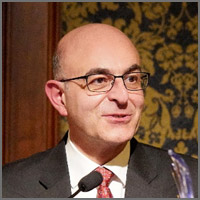
| Professor Sergio Pellegrino Sergio Pellegrino is the Joyce and Kent Kresa Professor of Aerospace and Civil Engineering at the California Institute of Technology, Senior Research Scientist at NASA’s Jet Propulsion Laboratory, and Co-Director of the Space Solar Power Project. After earning a PhD in Structural Mechanics from the University of Cambridge in 1986, he spent more than 20 years there while based in the Department of Engineering, during which he founded the Deployable Structures Laboratory. He has held visiting positions at the Universities of Colorado (Boulder), Stanford and Harvard, among others. Pellegrino’s general area of research is the mechanics of lightweight structures, focusing on packaging, deployment, shape control and stability. With his students and collaborators, he is currently working on novel concepts for future space telescopes, spacecraft antennas, and space-based solar power systems. As a member of the design team of the NASA Super Pressure Balloon from 2003 to 2016, he has worked extensively on analysis methods for stratospheric balloons. He has authored over 350 publications and registered 17 patents. A recipient of numerous awards, Prof. Pellegrino is a Fellow of the Royal Academy of Engineering, a Fellow of the American Institute of Aeronautics and Astronautics (AIAA) and a Chartered Structural Engineer. He is a Past President of the International Association for Shell and Spatial Structures (IASS), and founding chair of the AIAA Spacecraft Structures Technical Committee. |
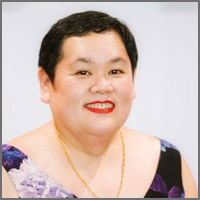
| Professor Olivia Mirza Olivia Mirza is Professor of Structural Engineering, and Associate Dean for Engagement in the School of Engineering, Design and Built Environment of Western Sydney University (WSU) in Australia. After working in industry for 12 years as a structural engineer, and earning a PhD from WSU, she took up an academic position with WSU. Her research has focussed on the behaviour of shear connectors in composite steel-concrete beams, the effectiveness of steel fibres in strengthening composite steel-concrete beams, sustainable concrete construction, and related topics. Besides authoring many papers on these topics, she has distinguished herself in forensic bridge rehabilitation, and has been the lead engineer on a number of projects in Sydney. One of these was the retrofitting of the Sydney Harbour Bridge, where she proposed a resilient alternative that combined precast modular construction with steel-concrete composite technology. Her passion for contributing to the fulfilment of Australia’s 2050 net zero pledge is reflected in her involvement in a recent light-rail project using concrete reinforced with macro-synthetic fibres, Australia’s first “green track”. She has been a recipient of many awards, and is currently the Sydney Division President for Engineers Australia. |
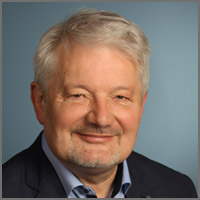
| Professor Jörg Schröder Jörg Schröder is Professor of Mechanics at the University Duisburg-Essen, and previously served as Vice-Rector for Research there. He was the President of the German Association of Applied Mathematics and Mechanics (GAMM) from 2020 to 2023, and is now serving as Vice-President until 2025. He is a Member of the German Academy of Science and Engineering, and of the Academy of Sciences and Literature Mainz. His areas of research interest are computational mechanics, continuum mechanics, and constitutive modeling. While direct methods in multiscale modeling have been his focus in the last three decades, his latest work has dealt with the coupling of electro-magneto-mechanical effects and simplified microstructural models based on statistically similar representative volume elements. Another focus has been the phenomenological descriptions of fiber-reinforced modern concretes and their regularization using the phase field method. He is the co-author of over 300 technical papers and 15 book. Professor Schröder serves on the editorial boards of several journals, and is the Editor-in-Chief of the journal “Archive of Applied Mechanics”, published by Springer. |
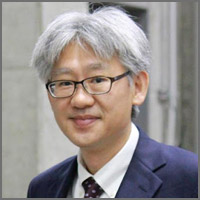
| Professor Chul-Woo Kim Chul-Woo Kim is Chair Professor in the Infrastructure Innovation Engineering Laboratory (Civil and Earth Resources Engineering) at Kyoto University. Prior to his appointment at Kyoto University, he was Chief Engineer of a consulting company, during which time he was involved in the cable vibration monitoring of the Stone Cutter Bridge in Hong Kong. His research interests include, among others, vehicle-bridge interactive systems, SHM of bridges, sensing for civil infrastructure, condition assessment and data-driven infrastructure management. He is one of the pioneers of the concept of “drive-by bridge inspection”, a vehicle-based monitoring of bridges. He advises municipalities in Japan and abroad on managing bridges and other infrastructure. He serves as the Chairman of the Strategic Technical Committee on Bridge Health Monitoring in the Kansai Chapter of the Japanese Society for Civil Engineers (JSCE). He also serves as a working group member of IFIP TC7 WG 7.5 on Reliability and Optimization of Structural Systems, and has served as a board member of the International Society for Weigh-in-Motion. Prof. Kim has published more than 380 papers (including 138 peer-reviewed journal papers), and is a recipient of many awards.
|
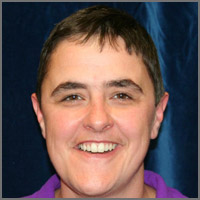
| Professor Genevieve Langdon Genevieve Langdon is Professor of Blast and Impact Engineering in the Department of Civil and Structural Engineering of the University of Sheffield. A mechanical engineering graduate of the University of Liverpool, her PhD work focused on the response of corrugated blast walls with semi-rigid connections to gas explosion loading. Genevieve joined Sheffield University in 2020 after fifteen years with the University of Cape Town, where she gained first-hand experience in explosion testing, and served as Director of the Blast Impact and Survivability Research Unit for five years. Her research is concerned with the response and failure of structures and materials subjected to explosion loading and other extreme loading conditions. The focus has been on the survivability of lightweight structures and materials to blast loading, blast injury, and the transient response of structures subjected to explosion loading. She has published many articles in leading international journals, and has been invited to present her work at various international conferences on these topics. She serves on the editorial boards of the International Journal of Impact Engineering, and Thin-Walled Structures, both published by Elsevier. She is registered as a Chartered Engineer with the UK Engineering Council, and is a member of both the Institution of Mechanical Engineers, and the British Society for Strain Measurement. |
Past SEMC Keynote Speakers: Prof. Zdenek Bazant (USA), Prof. Herbert Mang (Austria), Prof. Jin-Guang Teng (Hong Kong), Prof. Patrick Dowling (UK), Prof. Klaus-Jurgen Bathe (USA), Prof. Wilfried Kraetzig (Germany), Prof. Adnan Ibrahimbegovic (France), Prof. Phillip Gould (USA), Prof. Rene de Borst (UK), Prof. Mark Bradford (Australia), Prof. Yozo Fujino (Japan), Prof. Ted Galambos (USA), Prof. David Nethercot (UK), Prof. Yau Kai Cheung (Hong Kong), Prof. George Rozvany (Hungary), Prof. Dan Frangopol (USA), Prof. Daya Reddy (South Africa), Prof. Jan-Ming Ko (Hong Kong), Prof. Peter Jan Pahl (Germany), Prof. Alan Kemp (South Africa), Prof. Frans Bijlaard (Netherlands), Prof. Hong-Nan Li (China), Mr. Knut Goppert (Germany), Prof. Michael Rotter (UK), Prof. Dinar Camotim (Portugal), Prof. Kim Rasmussen (Australia), Prof. Jian-Fei Chen (UK), Prof. Amr Elnashai (USA), Prof. Guido De Roeck (Belgium), Prof. Tim Ibell (UK), Prof. Ben Young (China), Prof. Brian Uy (Australia), Prof. Simon Guest (UK), Prof. Maria Pina Limongelli (Italy), Prof. Xiao-Lin Zhao (China), Prof. Leroy Gardner (UK) and Prof. Günther Meschke (Germany).
